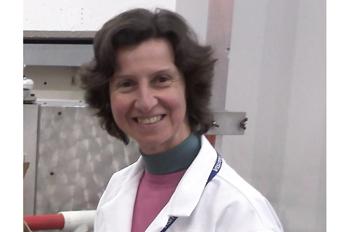Combined administration of Pd2Spm and Docetaxel trigger a substantial synergetic effect regarding angiogenesis inhibition, but also anti-migratory and anti-proliferative effects, reinforcing the putative use of metal based Paladium complex molecules in chemotherapeutic regimens.
Authors and Affiliations:
Ana L.M. Batista de Carvalho-Unidade de I&D Química-Física Molecular, Department of Chemistry, University of Coimbra, Portugal.
Paula S.C. Medeiros-Unidade de I&D Química-Física Molecular, Department of Chemistry, University of Coimbra, Portugal.
Francisco M. Costa -Laboratory of Pharmacology, Department of Drug Science, Faculty of Pharmacy, University of Porto, Portugal.
Vanessa P. Ribeiro- Laboratory of Pharmacology, Department of Drug Science, Faculty of Pharmacy, University of Porto, Portugal.
Joana B. Sousa- LAQV/REQUIMTE, Laboratory of Pharmacology, Department of Drug Science, Faculty of Pharmacy, University of Porto, Portugal
Carmen Diniz - LAQV/REQUIMTE, Laboratory of Pharmacology, Department of Drug Science, Faculty of Pharmacy, University of Porto, Portugal
Maria P.M. Marques - Unidade de I&D Química-Física Molecular, Department of Chemistry, University of Coimbra, Portugal; Department of Life Sciences, Faculty of Science and Technology, University of Coimbra, Portugal.
Abstract:
The present work aimed at evaluating the antitumour properties of a Pd(II) dinuclear complex with the biogenic polyamine spermine (Pd₂Spm) by investigating: i) the antiangiogenic and anti-migration properties of a Pd(II) dinuclear complex with the biogenic polyamine spermine (Pd₂Spm); ii) the anti-proliferative activity of Pd₂Spm against a triple negative human breast carcinoma (MDA-MB-231); and finally iii) the putative interaction mediated by combination of Pd₂Spm with Docetaxel.
Anti-invasive (anti-angiogenic and anti-migratory) and anti-proliferative capacities were assessed, for different combination schemes and drug exposure times, by CAM assay and VEGFR2 tyrosine kinase activity measurement, MatrigelTM method and SRB
proliferation test, respectively.
Results indicate the ability of Pd₂Spm to restrict angiogenesis and migration: Pd₂Spm induced inhibition of angiogenesis (81.8±4.4 % for total length values, at 4 μM), when compared to the (26.4±14.4%) DTX-triggered at the clinically used dosage of 4x10-²μM (n=4 to 11); Pd₂Spm caused a marked inhibition of migration (43.8±12.2%). The combination of Pd2Spm/DTX was more effective as anti-invasive and anti-proliferative (than DTX or Pd₂Spm in sole administration), being compatible with the occurrence of synergism (for anti-angiogenic effect: IC50 Pd2Spm/DTX=0.5x10-² μM; IC50 DTX=1.7x10-² μM; IC₅₀ Pd₂Spm=1.6 μM).
In conclusion, in this work, Pd2Spm complex effects on angiogenesis, migration and proliferation were reported revealing this compound as a promising therapeutic agent to treat cancer. Moreover, a combined administration of Pd2Spm and DTX was assessed and was found to trigger a substantial synergetic effect regarding angiogenesis inhibition, but also anti-migratory and anti-proliferative effects reinforcing the putative use of metal based Pd complex molecules in chemotherapeutic regimens.
This is a major conclusion aiming at the application of these combined strategies against metastatic breast cancer (or other type of resistant cancer), justifying further studies that include pre-clinical trials
Journal: PLOS ONE
Link: http://journals.plos.org/plosone/article/file?id=10.1371/journal.pone.0167218&type=printable





